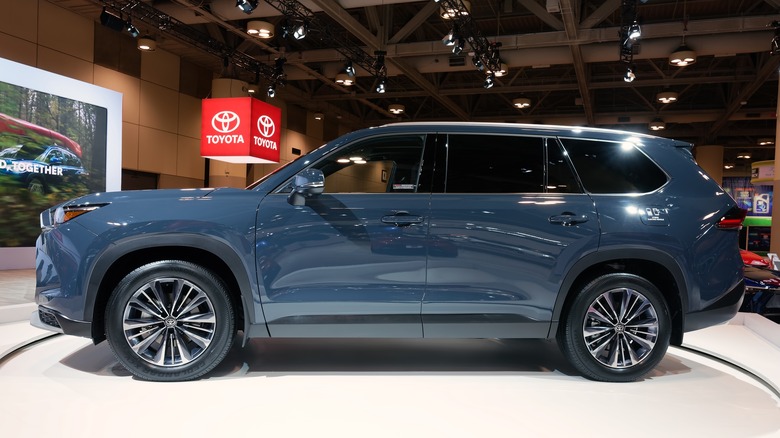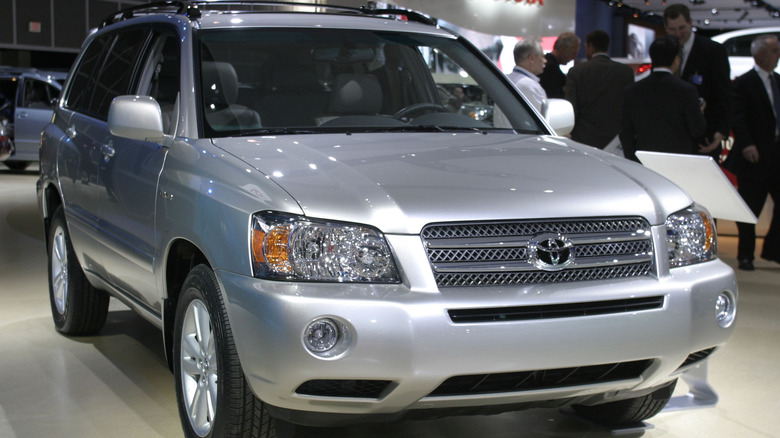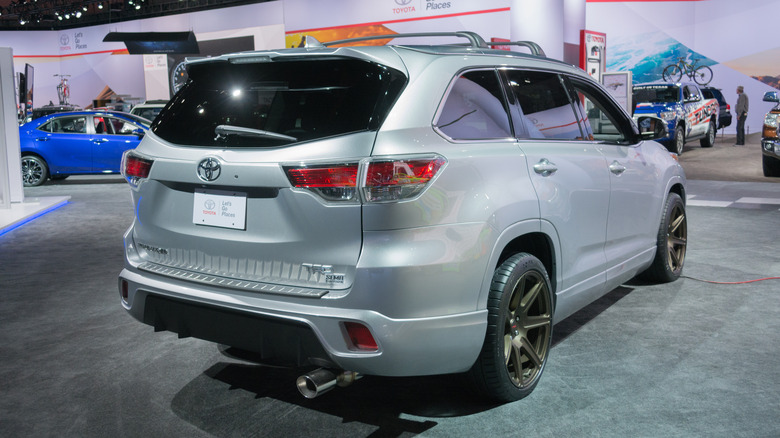Toyota's Crossover: How The Highlander Has Lived On For Over 20 Years
The first-generation Toyota Highlander began the midsize crossover trend, a refreshing approach to the burgeoning SUV market during the new millennia. Back then, larger SUVs had ladder frame architectures that delivered uncompromising off-road abilities at the expense of a stiffer, jittery ride on smooth pavement. However, the Highlander was different.
Based on Toyota's long-serving K platform that underpins the Camry, the Highlander was an instant hit when it hit the dealership floor in early 2021. Fast forward to 2023, and the Highlander remains a strong seller in this SUV-crazy American market. The Highlander entered its fourth generation in 2020, and has since spawned a genuine three-row Grand Highlander variant for 2023; complete with an array of conventional gasoline or hybrid powertrains, an available all-wheel drivetrain, and the latest in-cabin technology.
Toyota has consistently updated the Highlander over its four-generation (and counting) run, making it wider and lengthening the wheelbase to address customer requests for more room and better practicality. It's why the Highlander has lived on for the past 20 years.
Toyota Highlander: From medium to large
Like its Camry ancestry, the Toyota Highlander grew more prominent as the generations progressed. The first-gen Highlander (2001-2007) rode on modified Camry underpinnings, and was available with a 155-horsepower 2.4-liter four-cylinder gas engine, but Toyota added a more potent 230-horsepower 3.3-liter V6 in 2004. Moreover, Toyota unveiled the first Highlander Hybrid in 2005, officially making it the world's first three-row, seven-seat hybrid SUV.
The second-gen Highlander arrived in 2008, marking the beginning of the crossover's growth spurt. It grew 3.8 inches longer, 3.3 inches wider, and had a three-inch longer wheelbase. Moreover, it stood 2.8 inches taller and had more ground clearance.
Under the hood is a more potent 3.5-liter V6 engine with 270 horsepower and 248 pound-feet of torque, while the hybrid kept its 3.3-liter V6 and electric motors that produce a healthy 270 horsepower. Toyota brought back the four-cylinder engine in 2009: a 2.7-liter naturally-aspirated powerplant with 187 horsepower and a six-speed automatic gearbox.
Toyota Highlander: Third to fourth generation
Toyota updated the design of the third-generation Highlander (2014-2019) with a new grille and a more substantial body, growing 2.7 inches longer and half an inch wider to accommodate its new eight-seat cabin. The Highlander received an updated V6 engine in 2017, with 295 horsepower and 263 pound-feet of torque, and the new Highlander SE trim debuted with a blacked-out exterior motif and sportier suspension tuning.
The fourth-generation Toyota Highlander (2020-present) shifts to the brand's stiffer TNGA-K platform, and is even bigger than before; gaining a 2.4-inch increase in length and wheelbase, while gaining half an inch in width. Furthermore, Toyota ditched the old V6 and gave it a new turbocharged 2.4-liter four-cylinder engine with 265 horsepower and 309 pound-feet of torque.
The new engine pairs with an eight-speed automatic and a front-wheel or all-wheel drivetrain. Meanwhile, the Highlander Hybrid remains available with a seven or eight-seat cabin, and a standard 2.5-liter four-cylinder hybrid engine powertrain with 243 horsepower.


